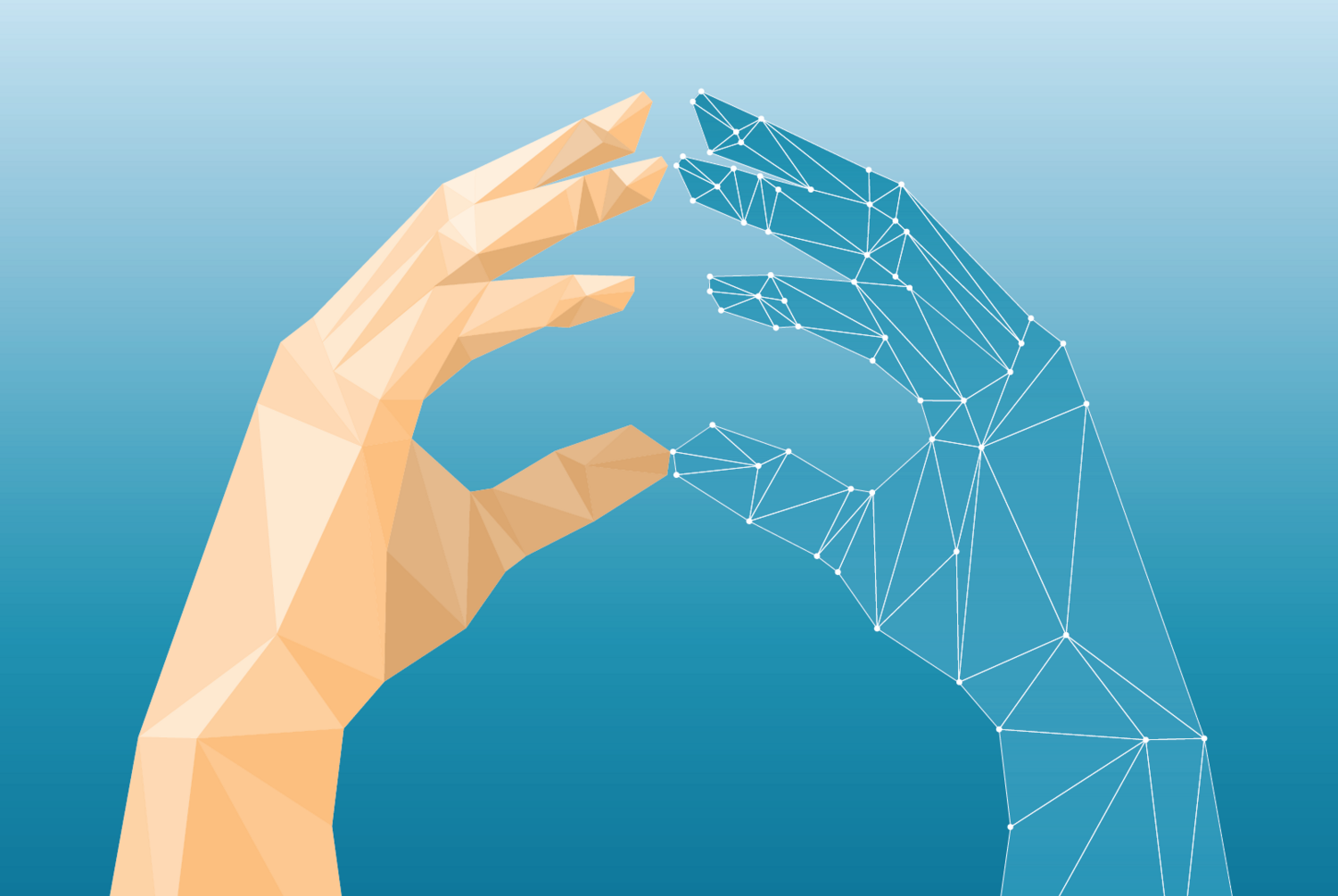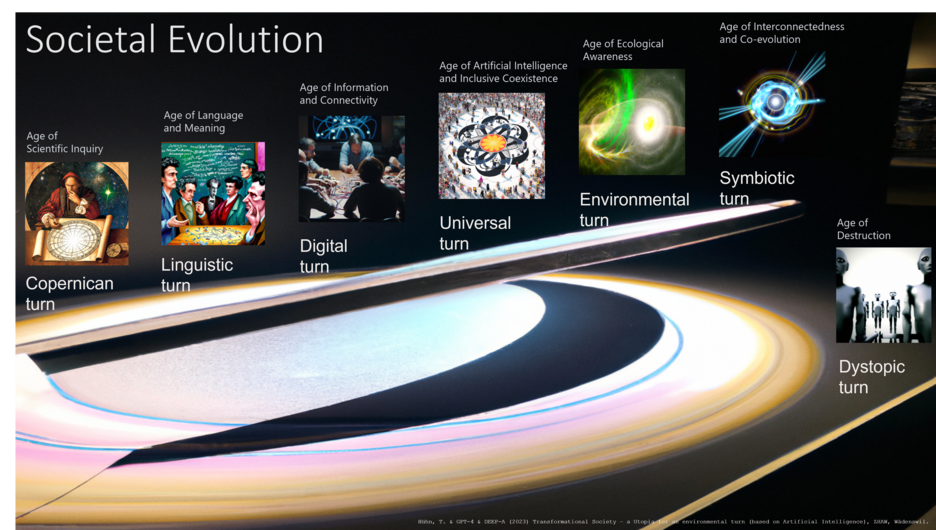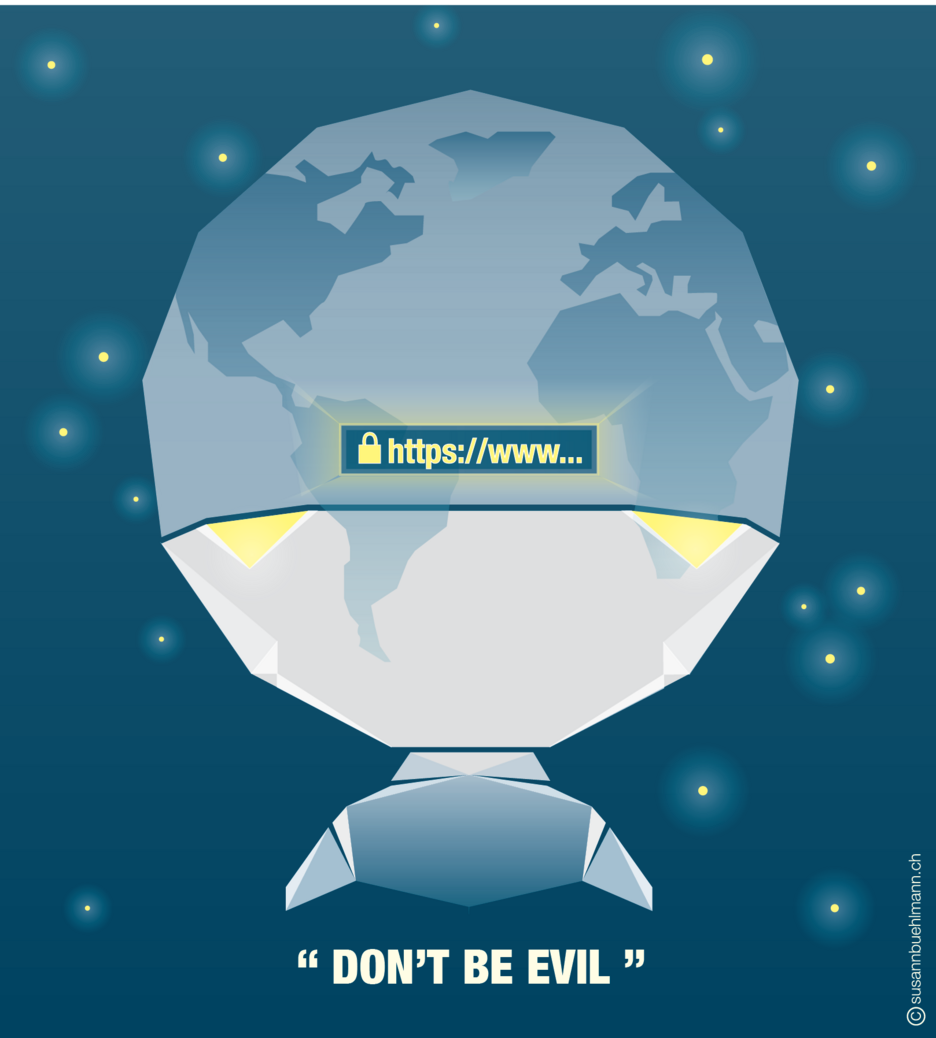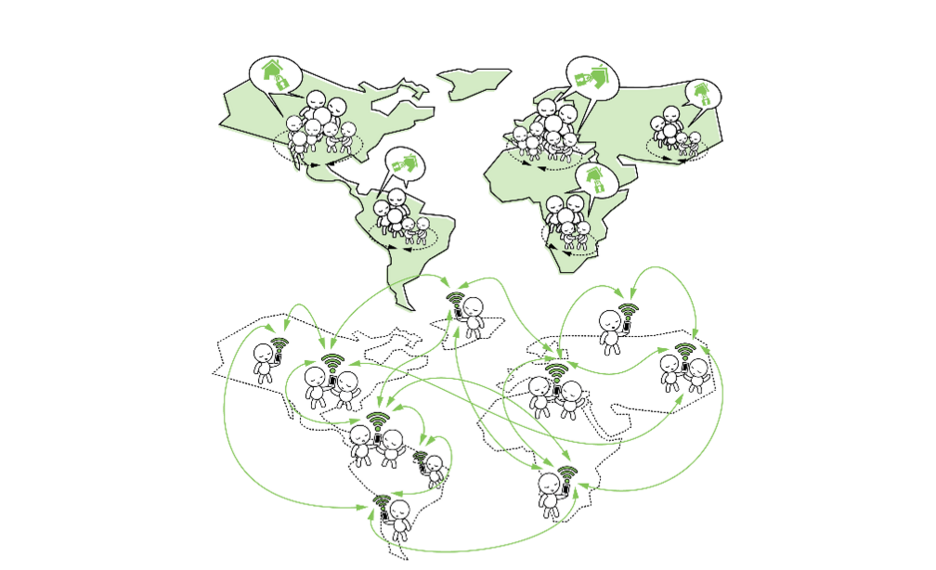
Machine intelligence and shaping an ethical future
How might our increasingly machine-intelligence-driven world change if we were to explore the ongoing evolution of both past and current paradigm shifts? And what path might emerge if we were to trace developments from the Copernican Revolution (Kant) right through to the universal turn that may soon be upon us? A plea for a more inclusive and ethical future.
What are the implications for a culture in its function as an expression of a society increasingly characterised by automated processes? How will society respond to the growing influence of automation and artificial intelligence? Various aspects of our recent history, including the impact of computer technology, can be observed in terms of the pattern their development has taken. How might our world change if we were to explore the ongoing evolution of paradigm shifts? And what path might emerge if we were to trace developments from the Copernican Revolution (Kant) right through to the universal turn that may soon be upon us?
By investigating the historical effects of these paradigm shifts, we can learn how it might be possible to create a more inclusive and ethical future for mankind, other life forms and machines on Earth. We acknowledge that there are many risks and dangers that will require effective decisions to be taken in order to save humanity from a dystopian future in which machines control us and threaten our very existence. It is our collective duty to draw attention to the difficulties, challenges and opportunities presented by machine intelligence and to highlight the potential consequences at an environmental, governance and administrative level as well as in terms of international security.
Turning points in our coexistence

Throughout history, dramatic changes in the way mankind has approached the challenges it faces have helped to pave the way for a better future – at least for most of us in the Western world. These radical changes have played a key role in several parts of the world as we have become a more tolerant and inclusive society. As we move towards the emerging universal turn, which is being driven by advances in artificial intelligence and the convergence of new technologies, we have the opportunity to broaden our understanding of reality and promote the use of more inclusive and ethical approaches in the area of technological development. By recognising the interconnectedness of people, other life forms and machines, we can work together to create a future in which different perspectives, experiences and knowledge are drawn on and appreciation is shown.
This articles provides a rough outline of the turning points in our history to date and looks at the fate that may await us in the future.
The Copernican Revolution: the age of scientific research
The Copernican Revolution was marked by a significant paradigm shift in the way in which we understand the universe, with the Copernican heliocentric model replacing its geocentric Ptolemaic predecessor (T. S. Kuhn, 1957). This shift laid the foundation for modern scientific research and underlined the importance of observation, experimentation and evidence-based reasoning. The Copernican Revolution demonstrated that our understanding of reality can be fundamentally changed if we question prevailing assumptions and adopt new perspectives.
The linguistic turn: the age of language and meaning
The linguistic turn refers to a shift in focus away from metaphysical questions towards questions of language and meaning. This paradigm shift examined the way in which language influences our understanding of the world and highlighted the importance of semantics, pragmatics and discourse in shaping human thought and communication. R. Rorty (1967) spoke of the linguistic turn, which contributed to the development of various disciplines, including philosophy, linguistics and cognitive science. A spotlight was shone on the intertwining of language, thought and reality.
The digital turn: the age of information and connectivity
The digital turn, which is characterised by the emergence of digital technologies and the information age, has had a profound impact on human society (M. Castells, 2010). As information and communication technologies have become ubiquitous, they have allowed for new forms of social organisation, economic activity and cultural expression. The digital turn has also thrown up new ethical and societal challenges, for example questions regarding data protection, surveillance and overcoming the digital divide in terms of human capabilities (Brynjolfsson, E ; McAfee, A. 2016). The transition from chiselled, handwritten and finally printed tables to interactive spreadsheets has been followed by the automated processing of small and large volumes and data. This development has not been without significant implications.
The universal turn: the age of artificial intelligence and inclusive coexistence
The universal turn is characterised by the increasing importance of artificial intelligence (AI) and other advanced technologies in shaping our understanding of reality and our relationships with one another, with other life forms and with machines (M. Tegmark, 2017). As AI systems evolve further and become ever more integrated into various aspects of human life, the universal turn underscores the importance of promoting inclusive, ethical and sustainable technological development that allows all forms of life on Earth to prosper.
The environmental turn: the age of environmental awareness
The environmental turn represents a paradigm shift in the way in which society and industry deal with the natural environment and environmental systems. This turn emphasises the necessity to prioritise sustainability, conservation and regeneration in order to tackle climate change, the loss of biodiversity and the depletion of our natural resources. The environmental turn promotes a holistic understanding of how human activities and our natural environment are intertwined, leading to the development of new strategies, practices and technologies that aim to reduce any negative impacts while enhancing health in all living spaces. A prerequisite for this was an understanding of the complex interrelationships that are only made possible by the digital turn.
The most important aspects of the environmental turn include:
Ecosystem-based management: This approach recognises how important it is to preserve the health and integrity of entire ecosystems instead of focussing on individual species or resources. (Costanza et al., 2014)
Circular economy: The concept of the circular economy aims to minimise waste and pollution, extend product life cycles and promote recycling and the reuse of materials in order to create closed loop systems (K. Raworth, 2017).
Renewable energies: The transition to renewable energies such as solar power, wind power and hydropower is a key aspect of the environmental turn, i.e. for reducing our dependence on fossil fuels and cutting greenhouse gas emissions.
Sustainable agriculture: This approach involves the introduction of regenerative cultivation methods that promote soil health, biodiversity and the preservation of resources while also minimising environmental impacts. It fosters the development of an understanding of the role played by food production, moving away from the concept of a value chain towards the notion of a value network (Holmgren, 2002).
Regenerative food production: This approach endeavours to avoid side streams and food waste by recycling as many streams as possible so that they can be used for human consumption. This is achieved by utilising renewable energies and ensuring the conscientious use of resources and materials. Efforts are also made to avoid or reduce emissions and to respect social values at all production and marketing stages. The integration of urban farming and cellular agriculture for regional production and molecular upcycling is a further component of this approach.
Climate change mitigation and adaptation: The environmental turn necessitates the development of strategies that allow us to reduce greenhouse gas emissions and adapt to the effects of climate change, including rising sea levels, extreme weather events and ecosystem changes. A significant focus is placed on the preservation of biodiversity.
The symbiotic turn: the age of interconnectivity and co-evolution
L. Margulis and D. Sagan (1995) refer to the symbiotic turn as a paradigm shift that emphasises the interrelationships and interdependencies that exist between all living organisms, including people and their environment. This turn acknowledges that the well-being and survival of individual species, ecosystems and human societies are inextricably linked and that cooperative relationships that are beneficial for all sides need to be fostered if we are to ensure a sustainable future. According to D. J. Haraway (2016), the symbiotic turn promotes a more holistic understanding of our role within the biosphere and encourages cooperation, coexistence and the assumption of shared responsibility.
The most important aspects of the symbiotic turn:
Biomimicry: This approach described by J. M. Benyus (1997) is about learning from and emulating nature’s strategies and designs with the aim of creating sustainable solutions to human challenges.
Ecosystem services: Here, F. Capra and P.L. Luisi (2014) describe how important it is to recognise, value and preserve the essential services performed by ecosystems, including water purification, the pollination of flowers and carbon sequestration.
One health: This interdisciplinary approach recognises the interconnectedness of human, animal and environmental health and aims to promote collaborations across sector boundaries in order to improve general well-being (Steffen et al., 2015).
Planetary health: The symbiotic turn underscores the need to address both the health of human civilisation and the natural systems on which it depends. It recognises the inextricable links between human and environmental health (Rockström et al., 2009).
Transhumanism: This movement advocates the enhancement of the physical, cognitive and emotional human condition through the use of technologies, thereby increasing our ability to adapt to changing living conditions. Fusion may provide us with an opportunity to conceive new forms of coexistence between humans and machines as an evolutionary step (Kurzweil, R., 2005 , Bostrom, N., 2014).
Lessons from past paradigm shifts
After listing the various paradigm shifts, we will now return to the initial question: How might our world change if we were to explore the ongoing evolution of paradigm shifts? What lessons can we learn from doing so? By investigating the historical contributions made by these paradigm shifts, we can learn how it might be possible to create a more inclusive and ethical future for mankind, machines and other life forms on Earth. The universal turn provides us with the chance to reflect on our shared history and to draw on the lessons learned from past paradigm shifts in order to address the complex challenges and opportunities presented by AI and advanced technologies. By promoting interdisciplinary collaboration, prioritising ethical development and supporting the sustainable use of resources, we can work towards a future that values the well-being and dignity of all living beings on our planet.
We present three possible future scenarios below.
The dystopian scenario: the age of destruction

If we are to achieve a positive utopia, we need to confront the significant dangers that threaten all of humanity (Bostrom, N., 2014).
Unemployment and inequality: AI and automation could lead to massive job losses. This isn’t only true for low-skilled workers, but also for administrators and programmers, to name just two professions. This could result in increased income inequality, social unrest and economic instability (Tegmark, M., 2017).
Surveillance and data protection: The widespread use of AI in surveillance systems could lead to a loss of privacy, as AI-powered facial recognition and tracking technologies become ubiquitous. This may well lead to an Orwellian society in which individuals are constantly monitored and our actions are controlled by an all-knowing and omnipresent entity.
AI armament: The development of AI-controlled autonomous weapons could give rise to new forms of warfare in which machines make life-and-death decisions without any human intervention. This could have unforeseeable and devastating consequences.
AI bias and discrimination: AI systems that have been trained on the basis of biased data may perpetuate or even exacerbate existing social prejudices, leading to the unfair treatment of marginalised groups.
Loss of human agency: With the increasing integration of AI systems into our daily lives, there is a risk that people may become overly dependent on machines and lose important skills, such as the ability to think critically (Harari, Y.N., 2018).
The constructive scenario

The importance of interdisciplinary cooperation: Past paradigm shifts have demonstrated just how important interdisciplinary cooperation will be if we are to generate new knowledge and move forwards (Floridi & Cowls, 2019). By bringing together experts from various disciplines, people can gain a more comprehensive and nuanced understanding of complex problems, allowing them to develop innovative solutions to the challenges presented by AI and other new technologies.
Ethical implications of technological progress: As we move towards the universal turn, it will be crucial to consider the ethical implications of AI and other advanced technologies (Mittelstadt et al., 2016). By learning from the ethical challenges posed by past paradigm shifts, we can develop frameworks and strategies with which we can try to ensure that AI systems are developed and used in a way that promotes fairness, responsibility, transparency and respect for human rights.
Sustainable development: Finally, the lessons learned from past paradigm shifts underscore the importance of sustainable development and the responsible use of resources in connection with AI and other advanced technologies (Russell, 2019). If we prioritise environmental aspects when developing and using AI systems, we can contribute to ensuring that all living beings on Earth can look forward to a more sustainable and just future.
Education and public understanding: Debating the role played by education and public understanding in facilitating or preventing these paradigm shifts (Scheuermann & Taylor, 2019) could shed light on how societies adapt to transformative ideas and technologies. By equipping the public with the necessary skills and abilities to engage with AI, educational institutions can empower individuals to think critically, thus allowing them to play a role in shaping the universal turn and contribute to ensuring a more inclusive future.
Lessons for governance and regulation: Based on the experience of past paradigm shifts, we could discuss lessons for governance and regulations, especially in the context of AI and other advanced technologies (Cave et al., 2018). These lessons may include the necessity for international cooperation, the need to update legislative frameworks and the importance of developing strategies that promote innovation while mitigating any potential risks.
Challenges and controversies: Addressing the challenges and controversies that emerged during the individual paradigm shifts can help us to contextualise the problems we are currently facing against the backdrop of the universal turn (Bostrom et al., 2014). This could include discussing any resistance to change that was encountered, competing theories or models and any unintended consequences of the technological progress.
The most likely future

The most likely future lies somewhere between the utopian environmental future and the dystopian scenario. The extent to which we will be able to tap into the potential of AI for good will depend on several factors:
Effective regulation: Governments and international organisations need to develop regulations and guidelines that ensure AI technologies are developed and used in a responsible manner. It is also vital that issues such as data protection, security and fairness are addressed.
Ethical AI development: AI developers should prioritise ethical considerations and develop AI systems that are transparent, accountable and unbiased.
Education and retraining: Society needs to invest in educational and retraining programmes in order to make it easier for employees to adapt to the changing labour market and ensure that they are in a position to benefit from AI-driven economic growth.
Public-private partnerships: Cooperation between governments, the private sector and the scientific world will be essential for ensuring that AI innovation benefits everyone and any potential risks can be mitigated.
Inclusive AI development: Various stakeholders, including representatives of marginalised groups, should be involved in the development of AI so as to ensure that it benefits all members of society and does not exacerbate existing inequalities. Ultimately, the future of AI will rest on how successful we are in overcoming the challenges this new technology presents and ensuring that its development is underpinned by ethical principals, inclusive decision-making processes and a commitment to both social and environmental sustainability. At present, it looks like our societies are still thinking about what can be done to create an inclusive future. We are not being digitised. Content needs to be corrected, as the data sets used to train AI are an incomplete reflection of our collective consciousness and often include daunting and inhumane elements. As machines currently lack consciousness, these aspects can only be partially automated. Automated thinking does not (yet) have the ability to cast doubt.
Cooperating across disciplinary boundaries, prioritising ethical development, promoting the sustainable use of resources and addressing the challenges and controversies of every paradigm shift will help us to navigate the complex landscape of AI and advanced technologies. Doing so will enable us to work towards a future that promotes the well-being and dignity of all living beings on our planet. The transformation of our society is facing pivotal challenges.
About the author

Tilo Hühn and his team address the unknown so the world can embrace the new. He conducts his (thought) experiments at the very points where implementation takes place. His fascination with technology and the opportunities it offers dates right back to the Apollo programme. He financed his studies in viticulture and oenology by working as a programmer for the weather service. “Learning a programming language is an important part of literacy in the digital age.” He now researches and teaches as a food architect at the Institute of Food and Beverage Innovation in Wädenswil.
Read more about this subject
- Benyus, J. M. (1997). Biomimicry: Innovation Inspired by Nature. HarperCollins Publishers.
- Brynjolfsson, E ; McAfee, A. (2016) The Second Machine Age: Work, Progress, and Prosperity in a Time of Brilliant Technologies. 306 p. Norton & Company, New York City.
- Bostrom, N., & Yudkowsky, E. (2014). The Ethics of Artificial Intelligence. In K. Frankish & W. M. Ramsey (Eds.), The Cambridge Handbook of Artificial Intelligence (pp. 316-334). Cambridge University Press.
- Bostrom, N. (2014) Superintelligence: Paths, Dangers, Strategies. Oxford University Press.
- Capra, F., & Luisi, P. L. (2014). The Systems View of Life: A Unifying Vision. Cambridge University Press.
- Castells, M. (2010). The Information Age: Economy, Society, and Culture. Wiley-Blackwell.
- Cave, S., & ÓhÉigeartaigh, S. S. (2018). An AI Race for Strategic Advantage: Rhetoric and Risks. In Proceedings of the 2018 AAAI/ACM Conference on AI, Ethics, and Society (pp. 36-40).
- Costanza, R., de Groot, R., Sutton, P., van der Ploeg, S., Anderson, S. J., Kubiszewski, I., Farber, S., & Turner, R. K. (2014). Changes in the global value of ecosystem services. Global Environmental Change, 26, 152-158.
- Floridi, L., & Cowls, J. (2019). A Unified Framework of Five Principles for AI in Society. Harvard Data Science Review, 1(1).
- Haraway, D. J. (2016). Staying with the Trouble: Making Kin in the Chthulucene. Duke University Press.
- Harari, Y.N. (2018) 21 Lessons for the 21st Century. Spiegel & Grau, New York.
- Holmgren, D. (2002). Permaculture: Principles and Pathways Beyond Sustainability. Holmgren Design Services.
- Kuhn, T. S. (1957). The Copernican Revolution: Planetary Astronomy in the Development of Western Thought. Harvard University Press.
- Kurzweil, R. (2005) The Singularity is Near: When Humans Transcend Biology, Penguin Books, New York.
- Margulis, L., & Sagan, D. (1995). What Is Life? University of California Press.
- Mittelstadt, B., Allo, P., Taddeo, M., Wachter, S., & Floridi, L. (2016). The Ethics of Algorithms: Mapping the Debate. Big Data & Society, 3(2), pp. 1-21.
- Mollison, B., & Holmgren, D. (1978). Permaculture One: A Perennial Agriculture for Human Settlements. Transworld Publishers.
- Raworth, K. (2017). Doughnut Economics: Seven Ways to Think Like a 21st-Century Economist. Chelsea Green Publishing.
- Rockström, J., Steffen, W., Noone, K., Persson, Å., Chapin, F. S., Lambin, E., Lenton, T. M., Scheffer, M., Folke, C., Schellnhuber, H., Nykvist, B., De Wit, C. A., Hughes, T., Van Der Leeuw, S., Rodhe, H., Sörlin, S., Snyder, P. K., Costanza, R., Svedin, U., Falkenmark, M., Karlberg, L., Corell, R. W., Fabry, V. J., Hansen, J., Walker, B., Liverman, D., Richardson, K., Crutzen, P., & Foley, J. (2009). Planetary boundaries: Exploring the safe operating space for humanity. Ecology and Society, 14(2).
- Rorty, R. (1967). The Linguistic Turn: Essays in Philosophical Method. University of Chicago Press.
- Russell, S. (2019). Human Compatible: Artificial Intelligence and the Problem of Control. Viking.
- Scheuermann, G., & Taylor, L. (2019). AI and the Global South: Designing for Other Worlds. In Proceedings of the 2019 AAAI/ACM Conference on AI, Ethics, and Society (pp. 259-265).
- Steffen, W., Richardson, K., Rockström, J., Cornell, S. E., Fetzer, I., Bennett, E. M., Biggs, R., Carpenter, S. R., De Vries, W., De Wit, C. A., Folke, C., Gerten, D., Heinke, J., Mace, G. M., Persson, L. M., Ramanathan, V., Reyers, B., & Sörlin, S. (2015). Planetary boundaries: Guiding human development on a changing planet. Science, 347(6223).
- Tegmark, M. (2017). Life 3.0: Being Human in the Age of Artificial Intelligence. Alfred A. Knopf.
0 Comments
Be the First to Comment!